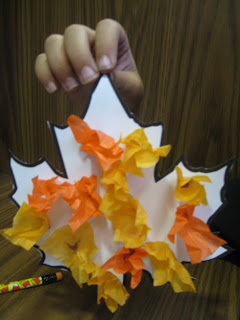“But my baby doesn’t have a job, what are you going to do
for my child?” I think all pediatric OTs have heard a comment similar to this
one at some point. Today, I’d like to focus on the role of OT in early
intervention. This is based on my experiences working in early intervention in
the state of California. I’m sure it varies by region.
Occupational therapists working in early intervention (birth
to three) provide services under IDEA Part C to children with developmental
delays. Occupational therapists work with the family and infant or toddler in
the natural environment to promote function and engagement in everyday routines,
such as mealtime, play and social development. The natural environment may
include home, daycare and community settings. In my experience, services
typically take place in the home or daycare setting. Services do not always occur in the natural
environment. The company I work for also has a clinic, with a great therapy
gym, which is used for some clients for a variety of reasons (e.g. parent
preference, access to specialized equipment, shortage of OTs). To give you an
idea of what occupational therapy addresses in early intervention, I’m
including a breakdown of a typical day for me.
Here’s a breakdown of a typical day for me:
8:00 – Check and respond to email; check voicemail/text
messages for cancellations (I primarily use email and text messages to
communicate with parents about scheduling/questions)
8:15 – Travel to first home
8:30-9:30 – Provide treatment to 2 ½ year old child with
global developmental delays, focusing on gross motor acquisition and pretend
play skills
9:30 – Travel to second home
9:45-10:45 – Provide treatment to 10 month old with motor
delays/high muscle tone. He shows off his new skill of crawling all over the
place!
10:45 – Travel to third home
11:15-12:15 – Provide treatment to 20 month old child with a
genetic syndrome and cortical vision impairment, focusing on locating toys by
sound and sitting independently
12:15 – Grab a quick bite (usually in my car) and travel to
next home
1:00-2:00 – Provide treatment to 18 month old with a
chromosomal disorder, focusing on eating skills, especially chewing/accepting
solid and textured foods
2:00 – Travel to fifth home
2:30-3:30 – Provide treatment to 16 month old with a global
developmental delays, focusing on sitting independently and developing postural
righting reactions
3:30 – Travel to last home
3:45-4:45 – Provide treatment to nearly 3 year old with
autism. Lots of discussion with parent about community resources (e.g.
gymnastics classes) and various preschool options (e.g. public school, Montessori,
Kumon Learning Centers) as the child transitions out of early intervention
services at age three. He has worked hard to increase the number of foods he
will eat and he shows me his new food for the week: avocado!
This is a full, but smooth day (when no one is sick or
cancels). I either do paperwork in the evening or on another day (when I have
time built into my schedule to do so). I absolutely love working with families
and their children in early intervention. Each child and family is unique and I
always have new and exciting challenges each day.
I would love to hear about the experiences of other
occupational therapists working in early intervention! Or the experiences of
families receiving occupational therapy through an early intervention program!































